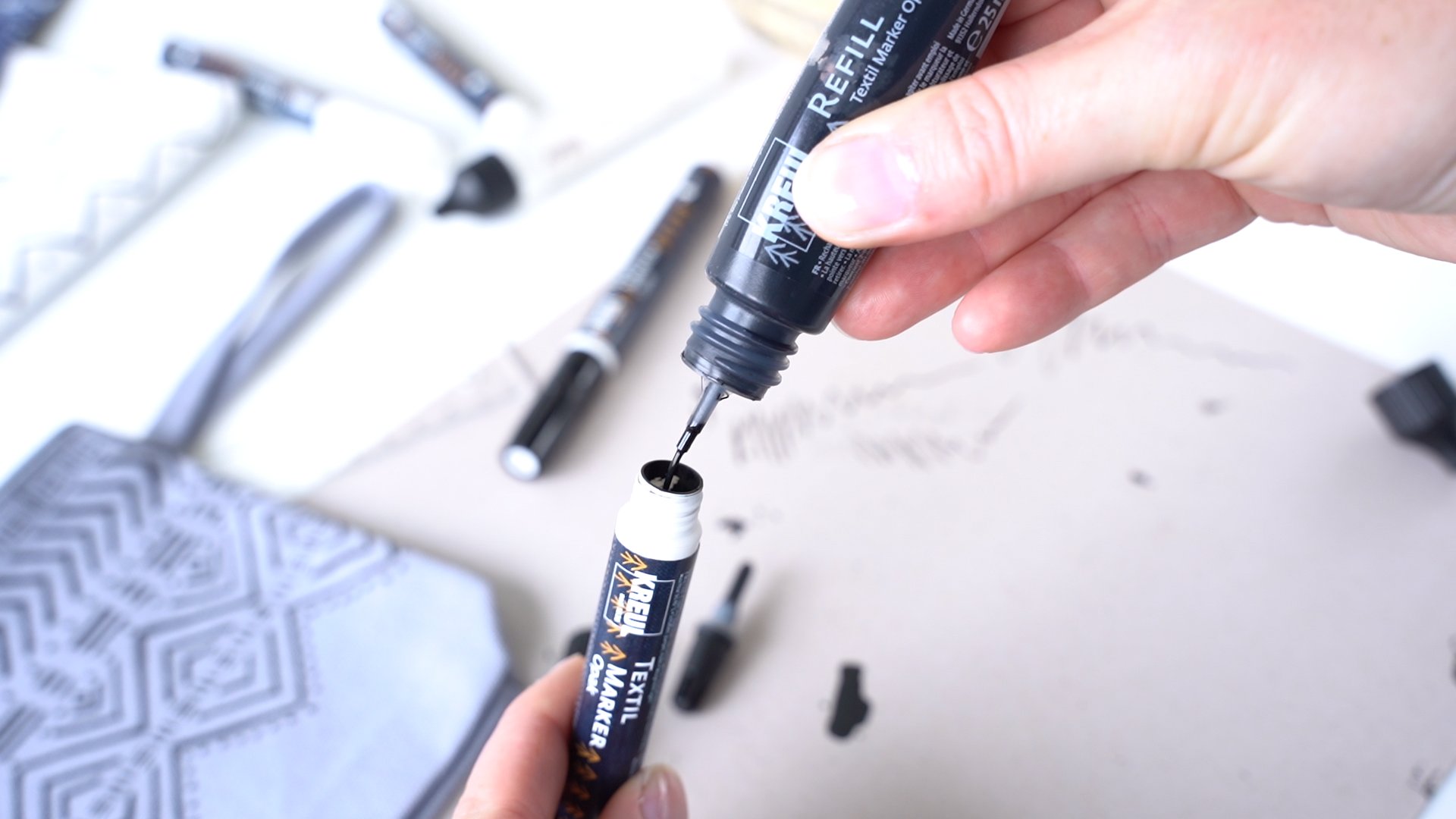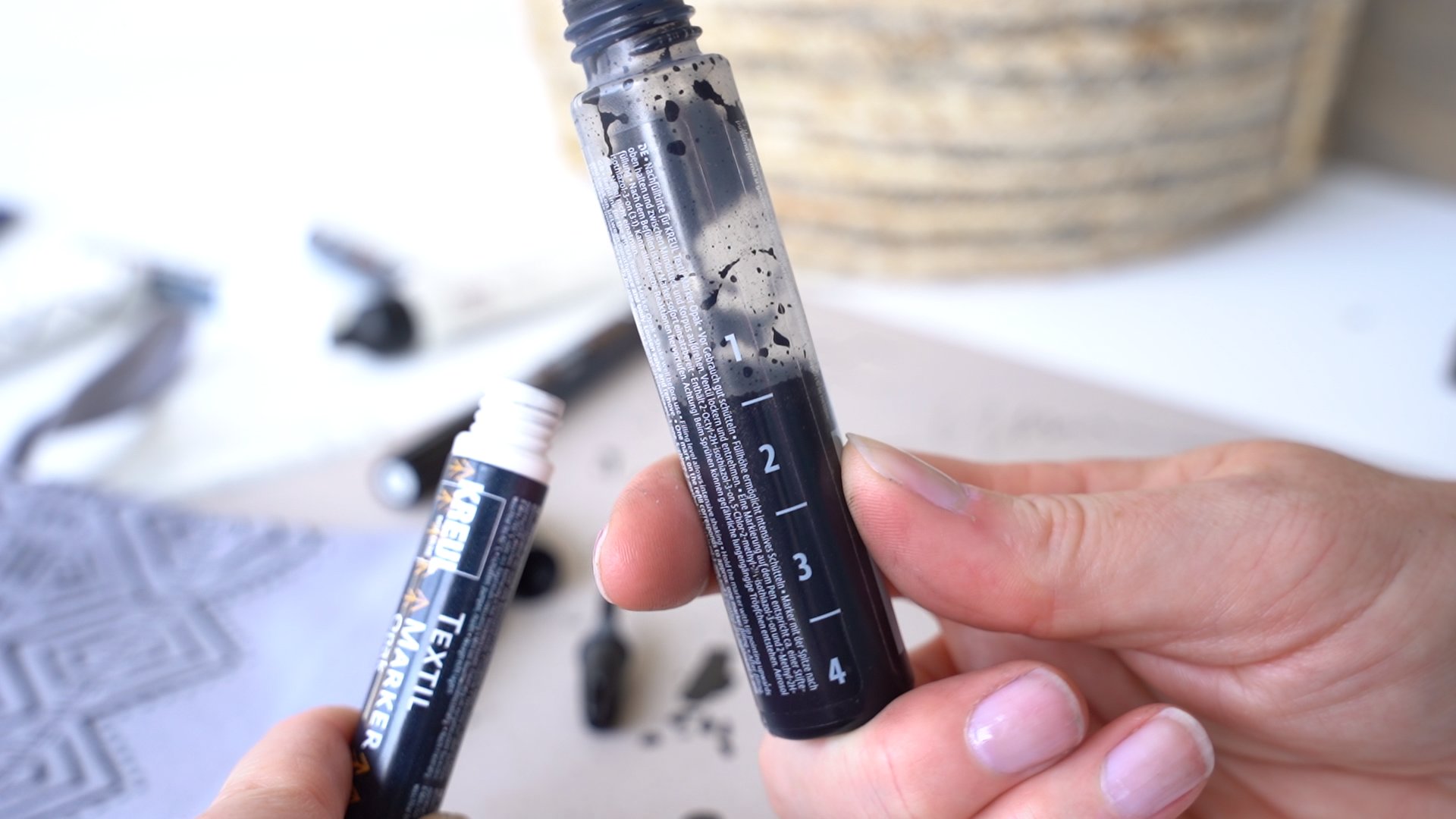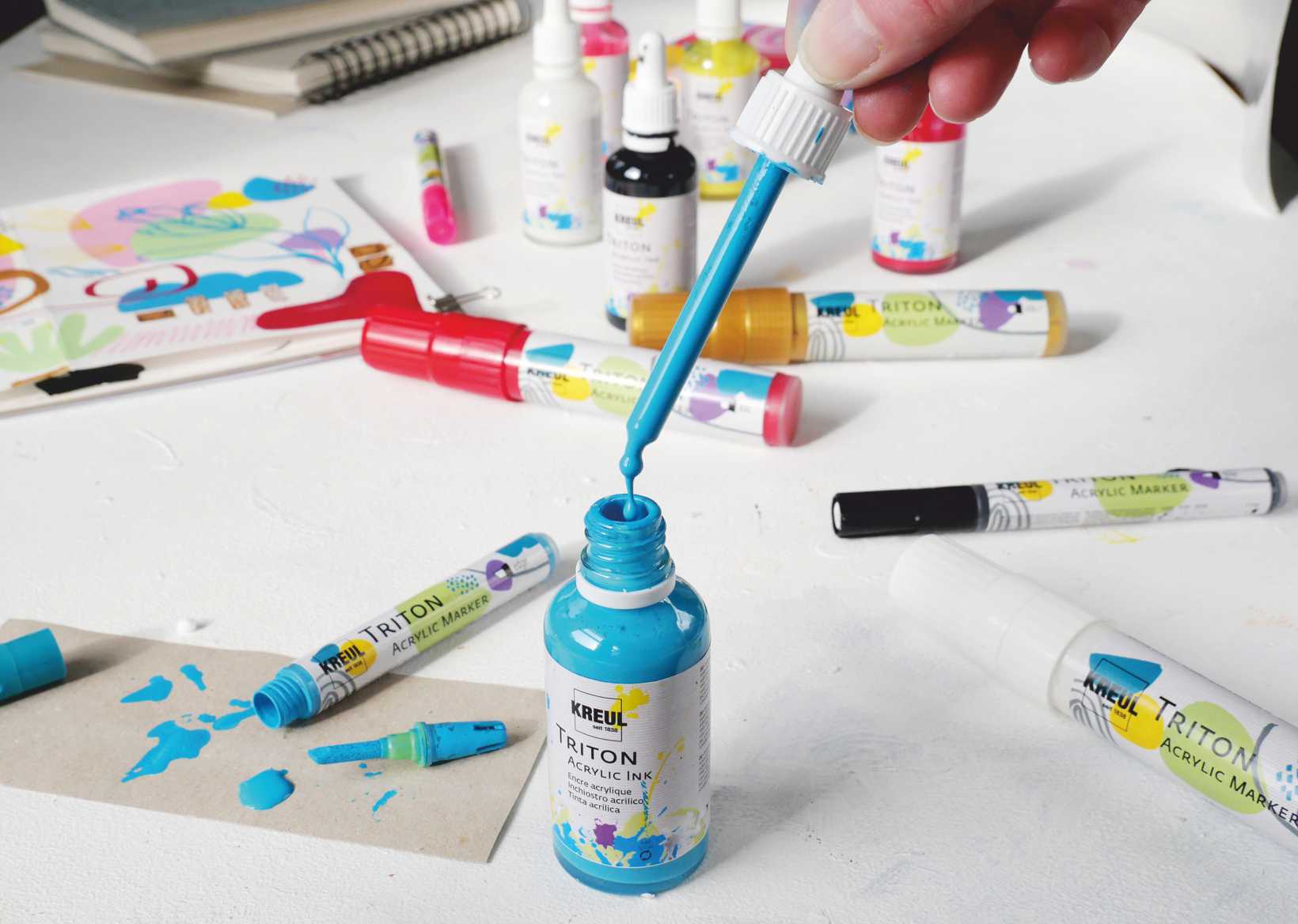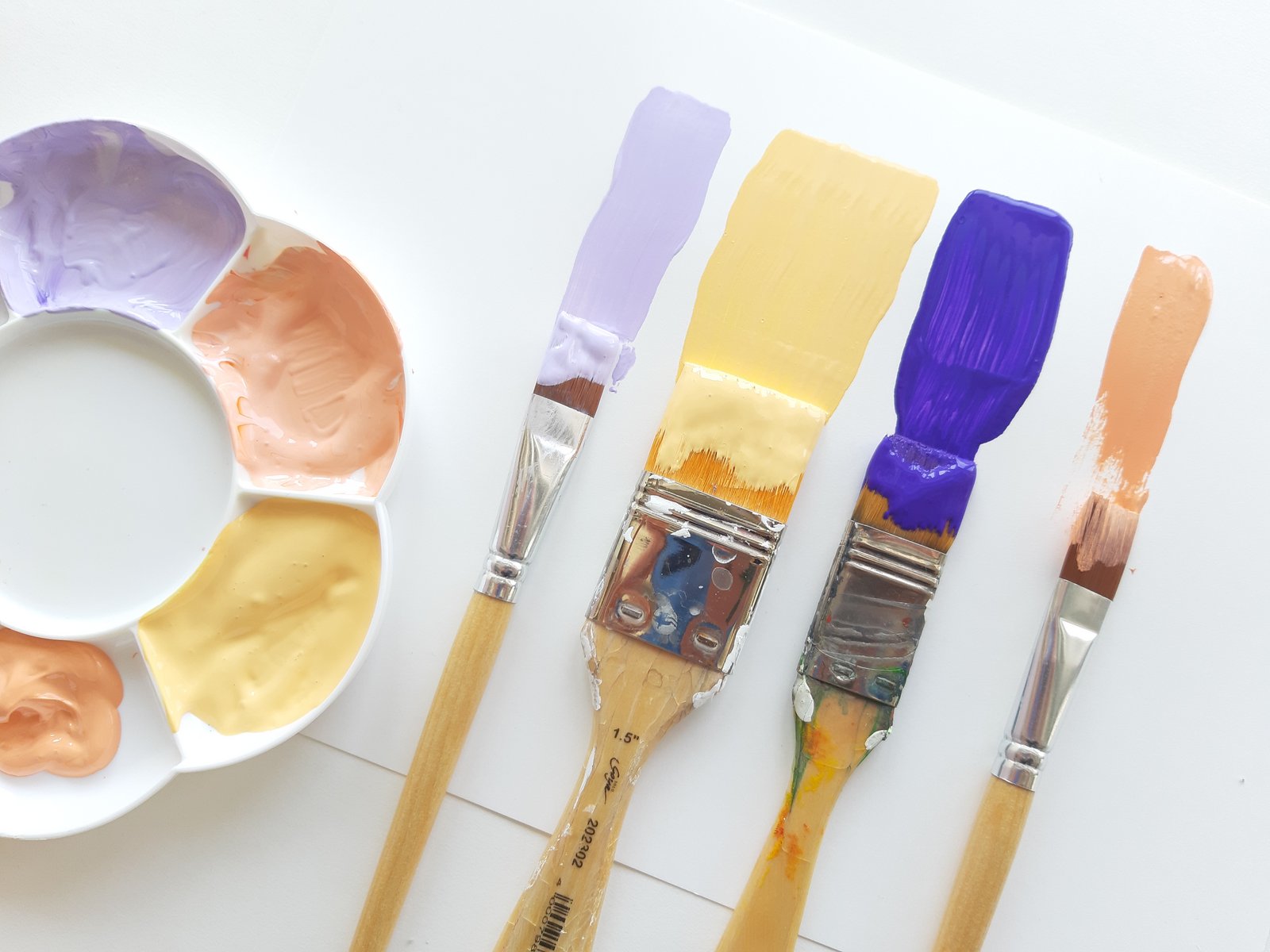Refill instead of buying new: marked with the refill icon
10/26/2021 |- KREUL Triton Acrylic Marker
- KREUL Textile Marker Opak
- KREUL Insight

Conventional markers are disposable products: as long as they contain ink, they can be used. Until now, however, this was bounded. With the KREUL Triton Acrylic Marker and the KREUL Textile Marker Opaque in the colours black and white, we want to change this and take advantage of the good quality of the pens. The body, mouthpiece, valve and cap of the marker are made of sturdy plastic. A very robust material that makes refilling possible, and this extends the life of the marker. Turn old into new: the KREUL Triton Acrylic Marker and the KREUL Textile Marker Opaque can thus stay longer in the economic cycle. To make this clear, we have printed a cycle symbol - the refill icon.

If markers are reused and not disposed of, plastic waste can be actively reduced. We would like to illustrate how much this makes a difference with the following example calculations. If you weigh the body, mouthpiece and cap, a KREUL Textile Marker Opaque has 13.12 g of plastic. With a refill pen, a KREUL Textile Marker Opaque can be refilled four times. Four individual markers have a total weight of 52.48 g plastic. One refill pen consists of 7.01 g plastic. The difference is 45.47 g plastic. That is 86.64% less with the same life cycle. Thus, almost 87% of plastic can be saved if creatives opt for the refill solution.

With the KREUL Triton Acrylic Marker, the difference is even bigger. It can be refilled with the KREUL Triton Acrylic Ink, which is available in a glass jar. Only the cap is made of 2.63 g plastic. A KREUL Triton Acrylic Edge, Medium or Fine weighs 12.99 g and can be refilled eight times with one bottle of ink. Eight markers add up to a plastic content of 103.92 g. If you decide to buy one marker and one bottle of ink instead of 8 markers, the difference is 101.29 g. This means about 97% less plastic waste. The KREUL Triton Acrylic Marker XXL contains 25 ml of acrylic ink and can be refilled twice with one bottle of the KREUL Triton Acrylic Ink. Nevertheless, about 45 g of plastic can be saved when refilling with ink, which corresponds to about 94%. But this is only the beginning of many refill offers. Our markers are so robustly designed that they can be refilled many more times.
To make it clear before purchase which products are refillable, we have printed a refill icon on the label, i.e., the body. At the POS, the refill icon can be found on the colour strips, the original colour cards and in the colour cards of the respective products. We started with the KREUL Triton Acrylic Markers and the KREUL Textile Markers Opaque, but we plan to make more products refillable. Refill is one of many ideas that makes being creative more sustainable. Sustainability is made up of several alternative measures. With each milestone, we move further in the right direction - namely a future that uses resources responsibly.


